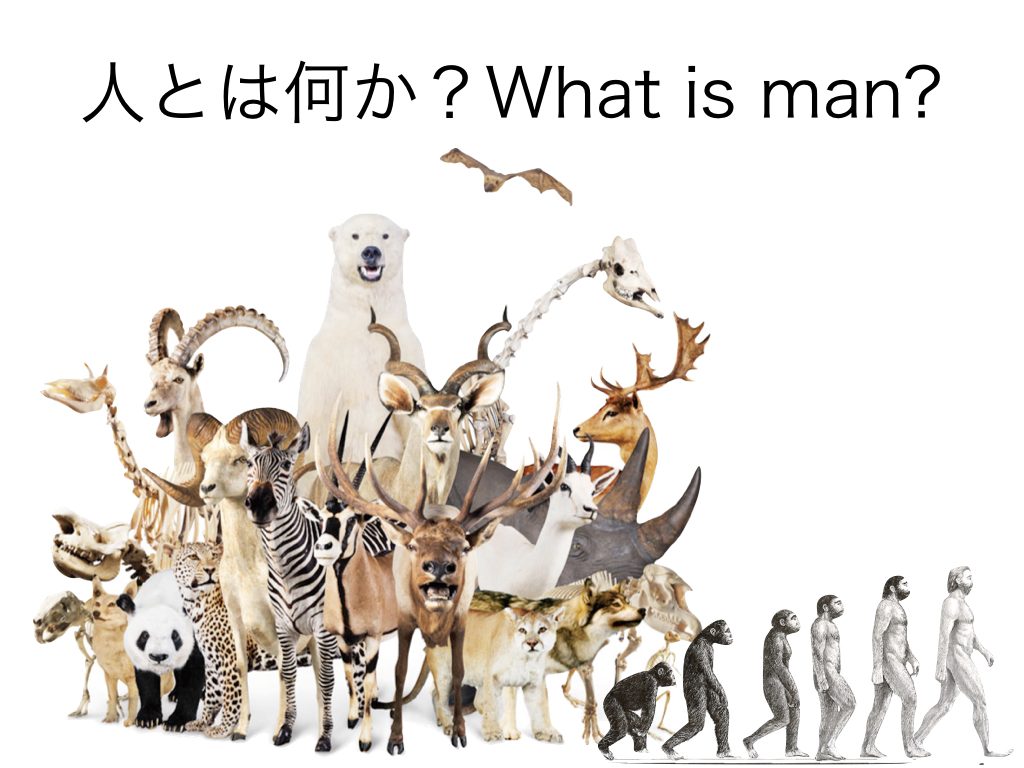
聖書の読み方によって大きな示唆を与えられるのがこの問題ではなかろうか?・・・「人とはなにか?』”What is man?”・・・人と他の生き物とはどう違うか? 人と地球上の他の存在とを決定的に区別する性質・定義は何か?
(上のイメージはhttps://www.kahaku.go.jp/exhibitions/ueno/special/2010/mammal/riku/及びhttps://www.ensinarhistoriajoelza.com.br/estereotipos-filmes-historicos/より)
How are humans different from other living creatures? What are the defining qualities that sets us apart from other living beings? In other words, “What is man?”.
百科事典や最近ではグーグル検索などでウィキペディアで調べる人が多くなっているが、そこには何とあるか?
We can look into a modern Encyclopedia or perhaps “google” the term in Wikipedia to get an answer. So what does it say?
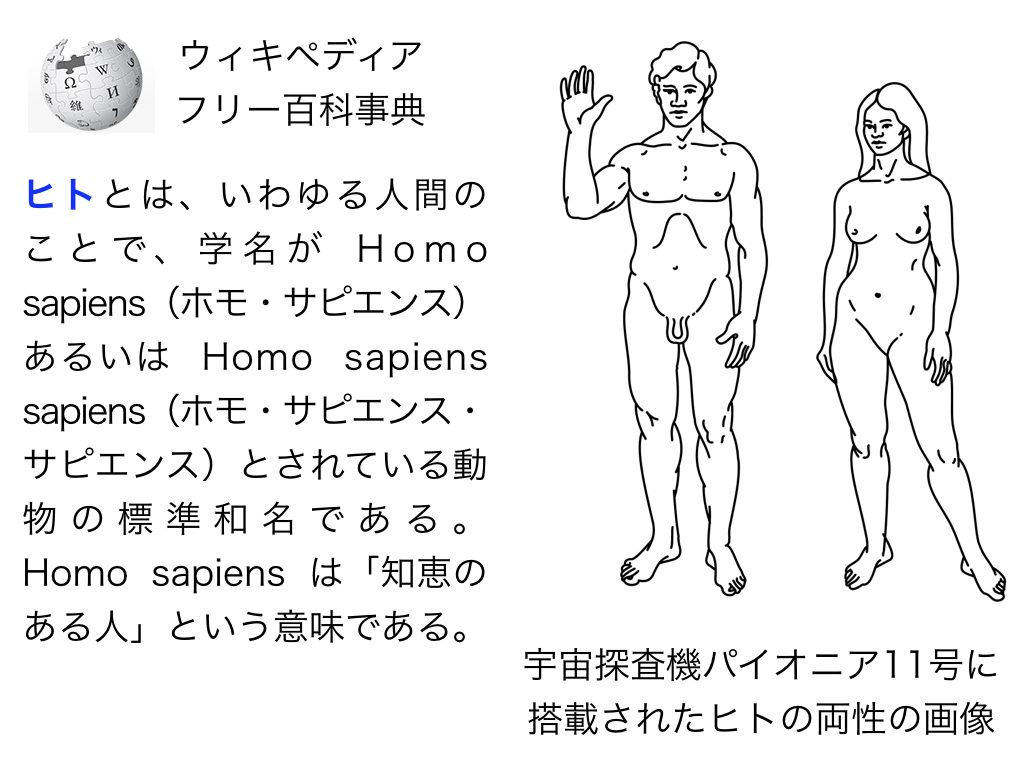
https://ja.wikipedia.org/wiki/ヒト
https://en.wikipedia.org/wiki/Human
ウィキペディアを含め色々勉強したり調べてりしてみると、結論的に生物学的な方法だけではヒトと類人猿などとの線引きは難しいことが分かる。
We can see that it is difficult to differentiate humans from other living creatures solely in biological terms.
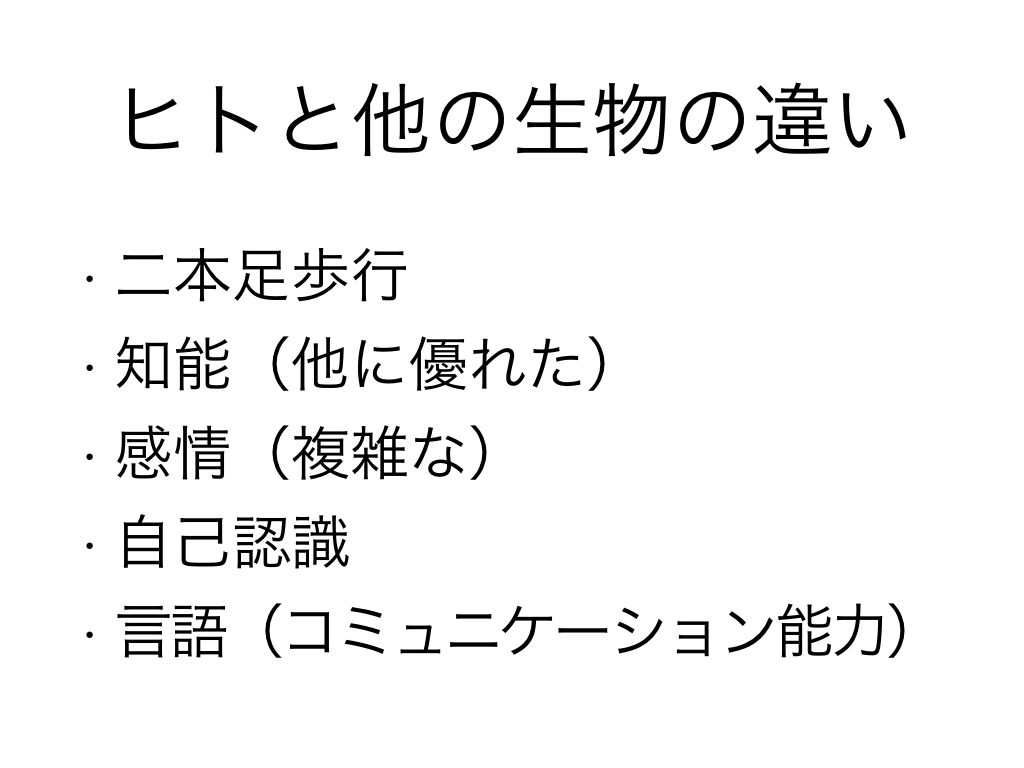
そこで、聖書の筆者(達)がどのような視点で人間を見ているか、聖書が書かれた当時の周りの文化・文明と比較すると鮮明になってくる。
Looking at the ancient near eastern cultural and textual context in which the writer(s) of the Old Testament wrote helps us understand how the Bible defines “man”.
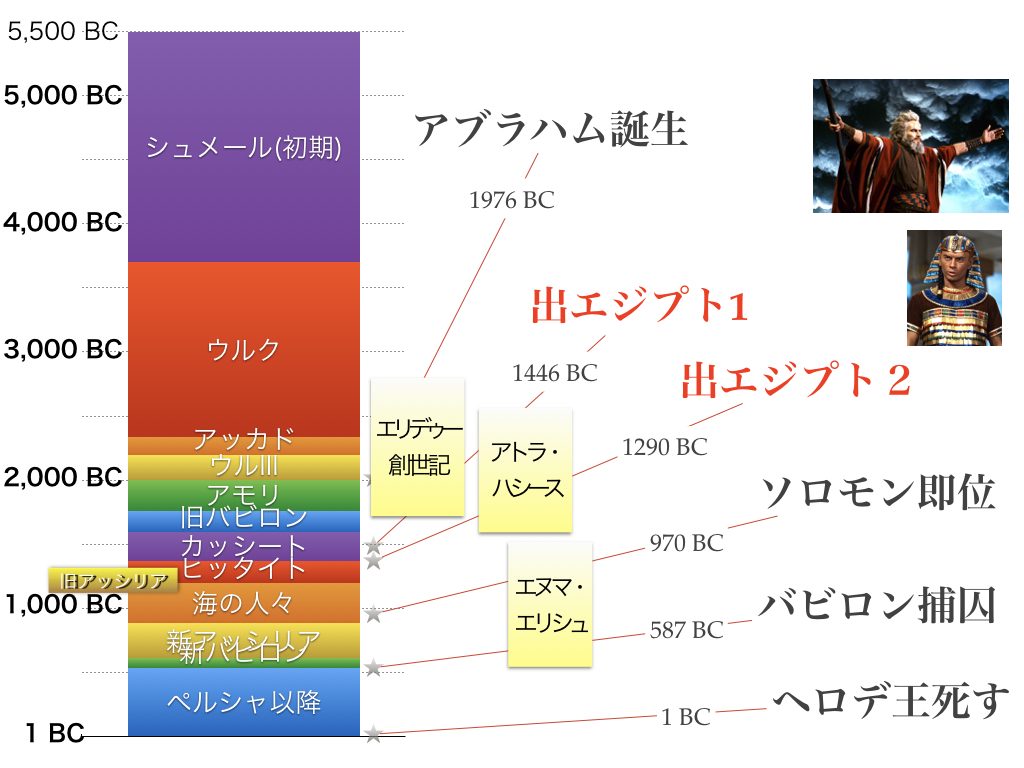
代表的な古代中近東文書(神話)は「エリデゥー創世記(Eridu Genesis)」、「アトラ・ハシース(Atra-hasis)」、と「エヌマ・エリシュ(Enuma Elis)」である。
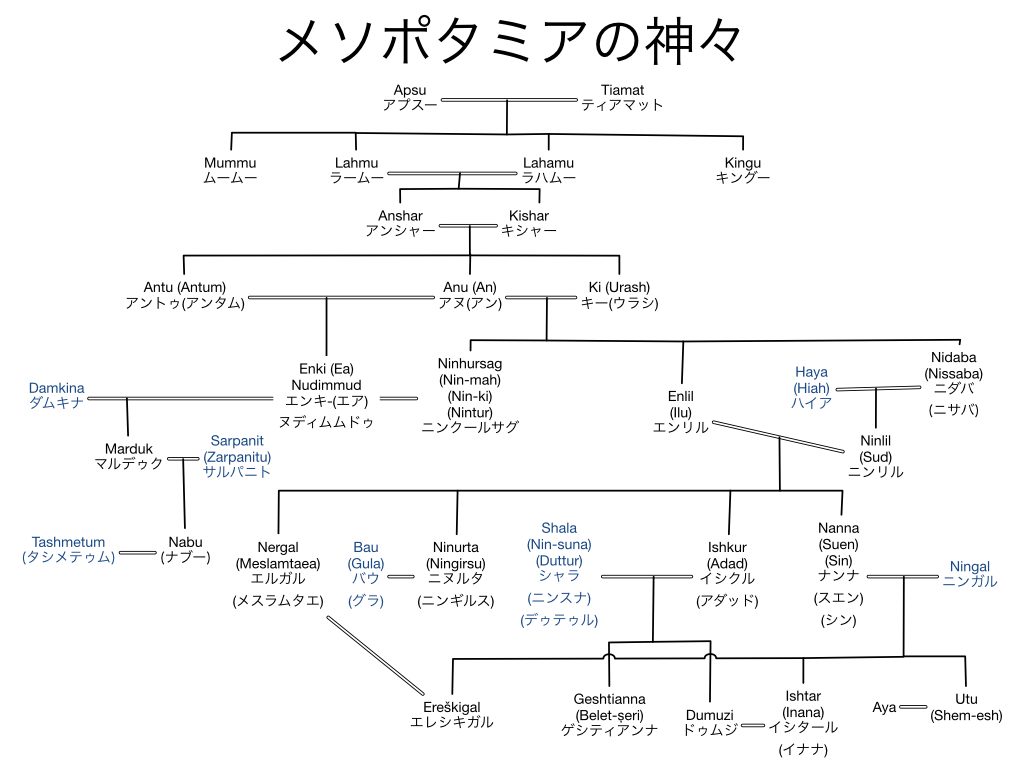
この図はこれらの神話に「登場」する神々で、神話によって、あるいは神話のヴァージョン(同じ内容の粘土板写しが複数、違う時代の違う場所で見つかっている)によって色々な名前で呼ばれている。
This is a chart of the many gods depicted in these epics and how they are related to each other. The same god is called by different names in the various epics, and the many versions of the epics.
エリデゥー創世記 Eridu Genesis
最古のシュメール神話であるエリデゥー創世記では(エンキ、エンリルと一緒に)人間を造った女神ニンターが人間たちに神々のための町や礼拝所をつくらせよう、と始まる。すなわち、人間は神々がこの地上で快適に過ごせるための道具である。
The oldest of the Mesopotamian creation myths, the Sumerian Eridu Genesis begins (on line 37, the first 36 lines lost) with the goddess Nintur who (along with Enki and Enlil) created humans, talking about regathering the humans to build cities and temples for the gods. In other words, humans are tools to enable the gods to abide comfortably.

エリデゥー創世記(Eridu Genesis)
最も完全な粘土板は1895年にNippurで発見された。1914年にこれを最初に翻訳したArno Poebelはこの粘土板を紀元前2000-1800年頃のものと推測した。Eridu Genesisと名付けたJacobsenは紀元前1600年頃のものとしている。(Bridge, E. J. (2016)., The Lexham Bible Dictionary. Bellingham, WA: Lexham Press.)
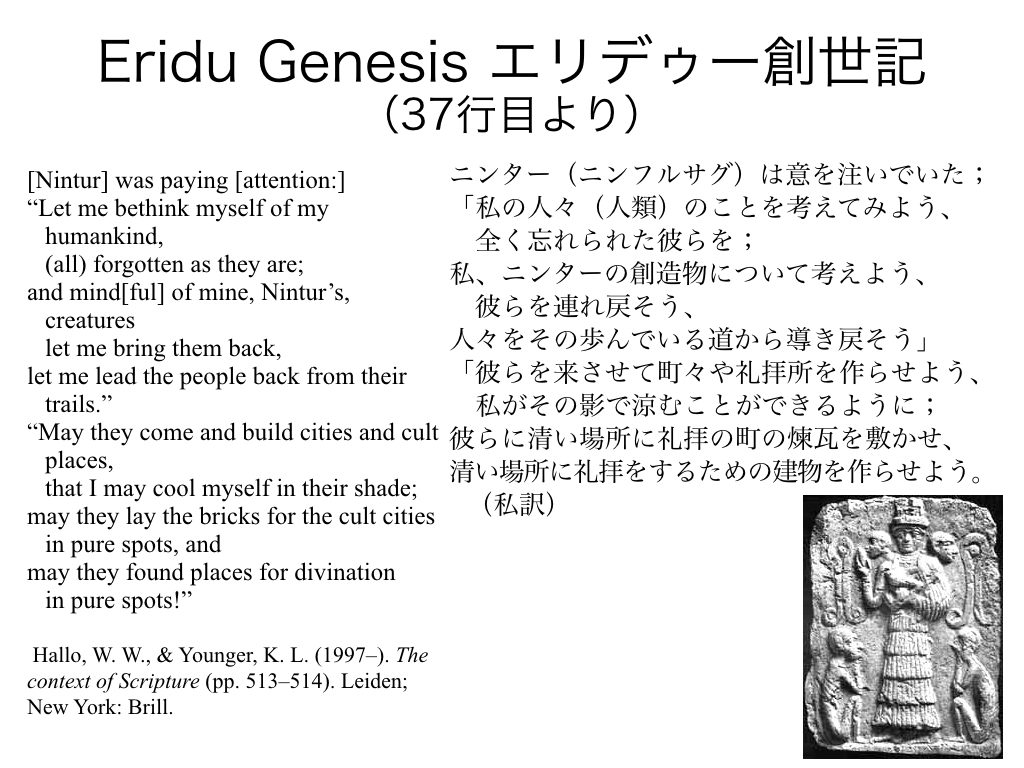
アトラ・ハシース Atra-hasis
二番目に古いメソポタミアの創造神話、アトラハシースでは厳しい環境の中で位の低い神々たちが上の神たちが住みよくするために労働することを押し付けられた事に反発して上の神を殺す企てを知って、彼らをなだめるために、代わりに労働をするために人間を作ったというお話。
The second oldest Mesopotamian creation myth, the Atra-hasis tells of the lesser gods who had to do all the hard labor to maintain a living place in the harsh environment, revolting and planning to kill one of the greater gods. Having getting wind of their plot, the greater god created humans to labor in the place of the lesser gods.
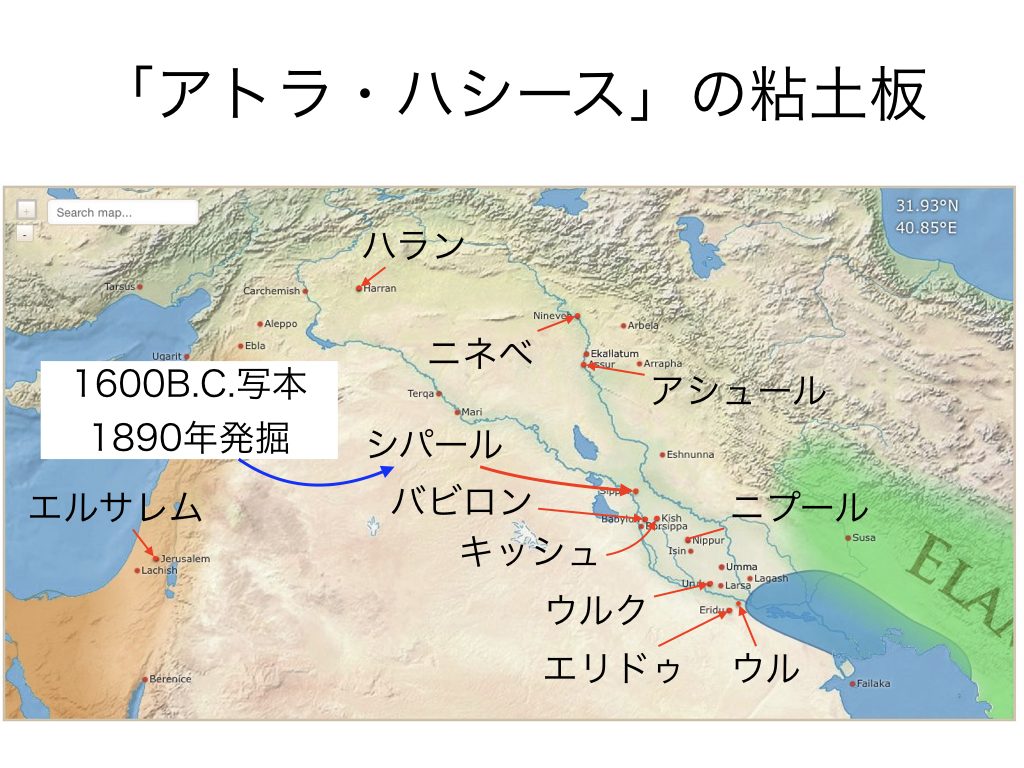
アトラハシース(Athrahasis)
最も完全な粘土板は1890年代にSippurで発見された。それは紀元前1636-1635年頃にバビロン王アミセドゥーカ治世の頃の書記(scribe)Nur-Ayaによって書かれたもので、1898年にScheilによって発表された。イギリスの古代近東学者DalleyによるとNur-Ayaは紀元前2390-2335年に生きたとされるウルの女神官Enheduanaが記した文書を写し取ったとされる。(Bridge, E. J. (2016)., The Lexham Bible Dictionary. Bellingham, WA: Lexham Press.)
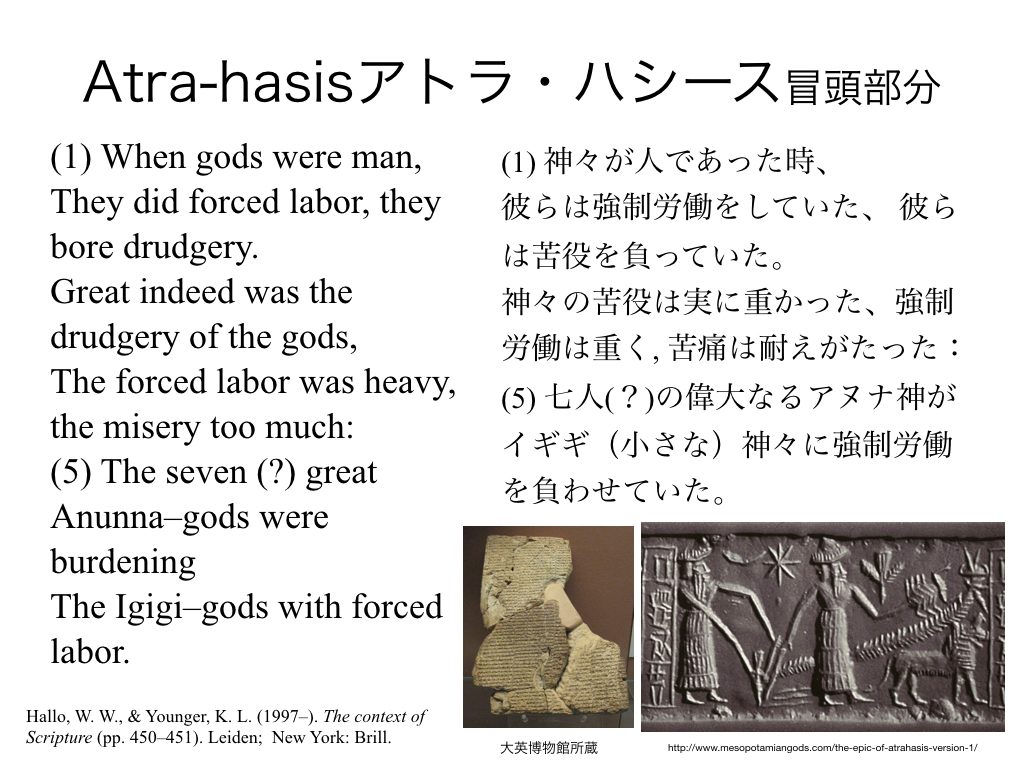
エヌマ・エリシュ Enûma Eliš
3つ目のエヌマ・エリシュはバビロニア神話で、中心にマルドゥク神が据えられ、人間は神々への奉仕のために存在しているというバビロニア人の世界観が分かる。
The third is the Babylonian myth Enûma Eliš, in which Murdoch is the central god, with people existing to serve the gods.
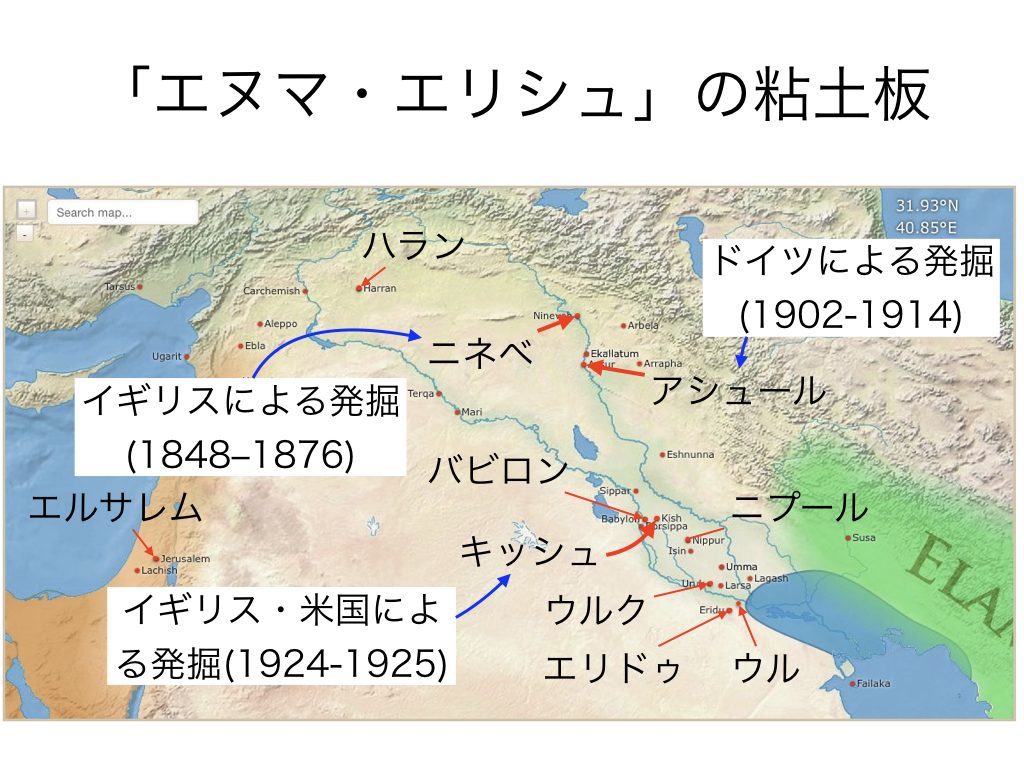
エヌマ・エリシュ(Enuma Elis)
19世紀にアッシュールバニパルの図書館で発見された。7つの粘土板からなり、アッシリヤ版ではアッシュール、バビロニア版ではマードックが主神。アッカド語が用いられていることやハッムラビ王(紀元前1728-1686年)がこの神話に言及していることより、物語の起源は古いとされる。(Dunne, J. A. (2016). The Lexham Bible Dictionary. Bellingham, WA: Lexham Press.)
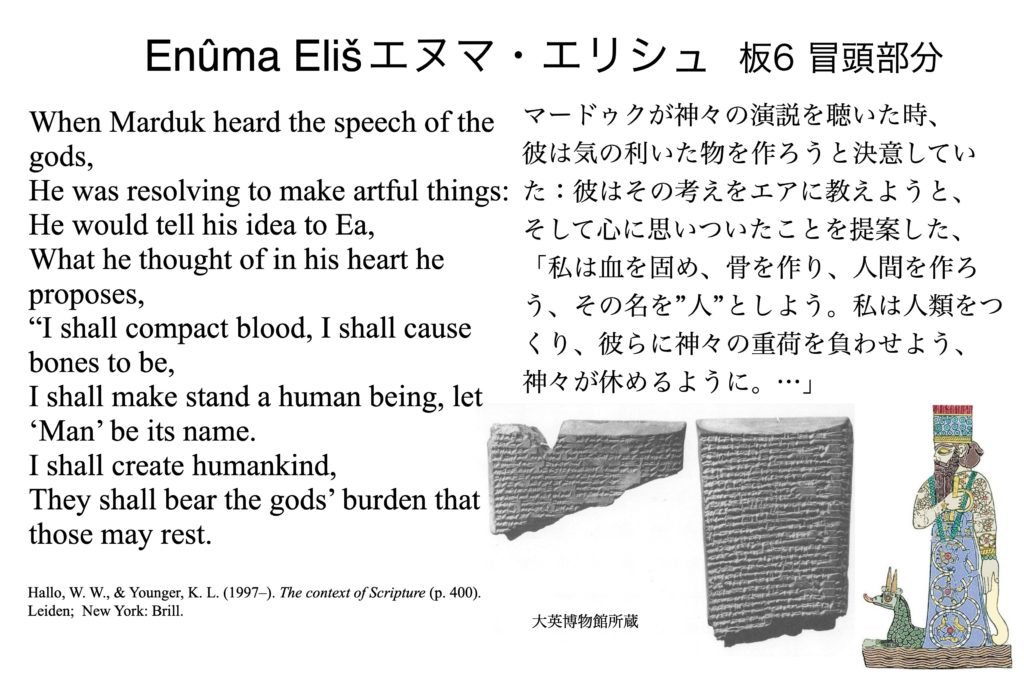
聖書では・・・
我々に・・・かたどり צַלְמֵ֖ (ṣě·lěm, image, 形)
我々に・・・似せて דְּמוּת (demûṯ, likeness, 似せたもの)
神は言われた。「我々にかたどりצַלְמֵ֖(ṣě·lěm)、我々に似せてדְּמוּת(demûṯ)、人を造ろう。そして海の魚、空の鳥、家畜、地の獣、地を這うものすべてを支配させよう。」(新共同訳)
創世記1章26節
と述べます。創世記において、צַלְמֵ֖ (ṣě·lěm, image, 形)とדְּמוּת (demûṯ, likeness, 似せたもの)は、創造者の形と機能を反映するものとして人間を表している訳です。
The Net Bible First Edition (2005); Biblical Studies Pressより
「形」は身体的な側面(physical)より精神的・霊的な側面(spiritual)に重点があります。「神に似たもの」(”image of God”)とは神との関係性を感知できる(relate to)ために付与された能力、「神に似る」(”to image God”)機能。
The Lexham Bible Dictionary (2016); Lexham Press より
『人」は神の」地上における代理者(earthly vice-regents)として創造され、その秩序を支配し神に使えることができる存在。
The Net Bible First Edition (2005); Biblical Studies Press より